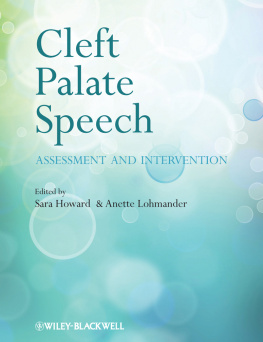INNER SPEECH AND
THE DIALOGICAL SELF
NORBERT WILEY
INNER SPEECH
AND THE DIALOGICAL SELF

TEMPLE UNIVERSITY PRESS
Philadelphia, Pennsylvania 19122
www.temple.edu/tempress
Copyright 2016 by Temple UniversityOf The Commonwealth System of Higher Education
All rights reserved
Published 2016
Library of Congress Cataloging-in-Publication Data
Wiley, Norbert.
Inner speech and the dialogical self : an unexplored continent/Norbert Wiley.
pages cm
Includes bibliographical references and index.
ISBN 978-1-4399-1327-7 ISBN 978-1-4399-1328-4 ISBN 978-1-4399-1329-1 (e-book) 1. Self-talk.
2. Self. 3. Identity (Psychology) I. Title.
BF697.5.S47W55 2016
155.2dc23
2015022874
9 8 7 6 5 4 3 2 1
To my student Mike Flaherty and my colleague Robert Perinbanayagam, both of whom helped me enormously in writing this book
CONTENTS
ACKNOWLEDGMENTS
F or advising on the entire manuscript, I thank Margaret Archer, Hans Baker, Christine Chambers, Randall Collins, Robert Dunn, Michael Flaherty, Hubert Hermanns, Robert Perinbanayagam, Thomas Scheff, and Frederick Vandenberghe.
For advising on individual chapters, I thank Lonnie Athens, Derek Bickerton, Peter Carruthers, Ira J. Cohen, F.E.X. Dance, Tonya Kim Dewey, Caryl Emerson, Viktor Gecas, Eugene Halton, Linda Hecker, John Heil, James Hoopes, Glenn Jacobs, John R. Johnson, Marcel Kinsbourne, Rodney J. Korba, Alain Morin, Claude Panaccio, Anne Warfield Rawls, Dmitri Shalin, Leonard J. Shedletsky, and James Wertsch.
Thanks go to Ginny Horning for taking the author photo.
INNER SPEECH AND
THE DIALOGICAL SELF
INTRODUCTION
T his book is a comprehensive treatment of inner speechalso called self-talk, internal conversation, and inner dialogue. By comprehensive I mean I try to cover all the important facets of this topic, providing an overview. In a few cases I go more deeply into a topic, hoping to add to it.
My approach is as a humanistic social theorist, leaning toward the classical pragmatism of Charles Sanders Peirce, John Dewey, William James, and George Herbert Mead. This means emphasizing the semiotic and dialogical features of the topic while skipping over many of the biological and neurological issues. In addition, I emphasize theory over empirical research. There are actually few empirical studies of inner speech, particularly within sociology, but there is a scattering of such studies in several fields. In other words, this field, at present, has only moderate visibility, but these publications and their visibility is increasing.
Given these limits, I try to hit all the important aspects of this topic. Inner speech is considerably more central to human life than is widely understood. As Oliver Sacks puts it:
We are our language, it is often said; but our real language, our real identity, lies in inner speech, in that ceaseless stream and generation of meaning that constitutes the individual mind. It is through inner speech that the child develops his own concepts and meanings; it is through inner speech that he achieves his own identity; it is through inner speech, finally, that he constructs his own world. (1989, 59)
The centrality Sacks attributes to inner speech is difficult to see because by its nature this form of speech has low visibility. It is silent; we are not always paying attention to it, particularly if it is a passive daydream; and we are usually busy doing something, such as driving a car, cooking, or talking to someone.
This inattention is probably due to its low visibility in our consciousness. However, its prevalence is much greater than people realize. As Noam Chomsky says:
Language is not properly regarded as a system of communication. It is a system for expressing thought, something quite different.... [L]anguage use is largely to oneself: inner speech for adults, monologue for children. (2002, 7677)
And in another place, he says:
Now let us take language. What is its characteristic use? Well, probably 99.9% of its use is internal to the mind. You cant go a minute without talking to yourself. It takes an incredible act of will not to talk to yourself. (2012, 11)
This introduction positions the topic in its major contexts: intellectual history, the major academic disciplines, and other human faculties and capabilities that are affected by or make use of inner speech.
Introduction: The Nature of Inner Speech
Inner speech, as stated, is difficult to observe, since we cannot see it in other people. We get direct contact with it only in ourselves, and even here it usually goes on in the inner reaches of our consciousness. It is like dreams in that it is difficult to see and hard to explain. But dreams are passive experiences that happen to us, whereas inner speech is an active process, often quite deliberately used by us and aimed at important goals.
We do encounter some inner speech in novels and films, although these texts cannot be completely faithful to their topic. If they were structured exactly as we experience inner speech, the audience would be unable to understand them, as with some of James Joyces extreme examples. L. S. Vygotsky points out that inner speech, if viewed as we actually experience it, is a private language that only the speaker can understand (1987b, 204, 278). Fiction writers have to find a balance between imitating inner speech, on the one hand, and making it understandable, on the other. People who reveal examples of their own inner speech also have to strike this balance.
Some Examples of Inner Speech
The following examples are somewhat long, but the best way to discuss inner speech is to have some texts in front of you. In the first example, a waitress reports on her thoughts going to work. Her inner speech is presented linguistically along with brief sketches of her imagery.
Only eight minutes, takes five to change. Ive got to book [hurry]. Imagery: A disgustingly filthy locker room. Visions of me running from table to kitchen table. Sounds. Forks and knives scraping plates, customers yelling over each other. I have to make money. At least its not as bad as last summer. Memory imagery: A tiny dumpy diner. Visions of me sweating. Sensations of being hot. Visions of thirty marines eating and drinking. Sounds: country music on a blaring juke box. Ill be right there, just a minute please. Sensations of burning my arm in a pizza oven. Visions of dropping glasses. Sounds: Glass breaking, manager yelling, marines cheering. Oh God, get me out of here. Sensation: Cringe, humiliation. I hate waitressing. Cant wait to graduate and get a decent job. Visions of a paneled, brightly carpeted office with scenic pictures and healthy plants. Visions of me fifteen pounds thinner in a new skirt suit from Lord and Taylor. A great-looking coworker is pouring us coffee. Sounds of a clock chiming five oclock. Sure Id love to go out Friday night. (Caughey 1984, 135; italics added)
A second example is of a girl, a little under two years old, overheard when she was in her bedroom. The researcher sees this as an example of imaginative play. This text is what is called private speech, but it has the same qualities as inner speech.
Go Grandma and buy a pretty doll Grandma for me under the bed for me to play the piano... get up cling, cling-ling-ling. Grandma comes up the steps. Oh, oh, ah, ah, ah, lying on the floor tied up no cap on Theodosia (the doll) lie on the bed, bring yellow sheep to Theodosia, run tap, tap, tap, for Lena. Strawberries, Grandma, wolf lie on bed. Go to sleep darling Theodosia you are my dearest; everybody is fast asleep.... A cat came in here, Momma caught it, it had feet and black boots onshort cap, band on it. Poppa ran, the skyGrandma goneGrandpa resting. (Singer 1966, 134)
Next page











